Bamako, the pulsating heart of Mali, unfolds along the majestic Niger River, offering a kaleidoscope of experiences that defy expectations. It’s a city where every sunrise illuminates a vibrant mosaic of cultures, histories, and daily life played out against a backdrop of natural beauty and urban dynamism.
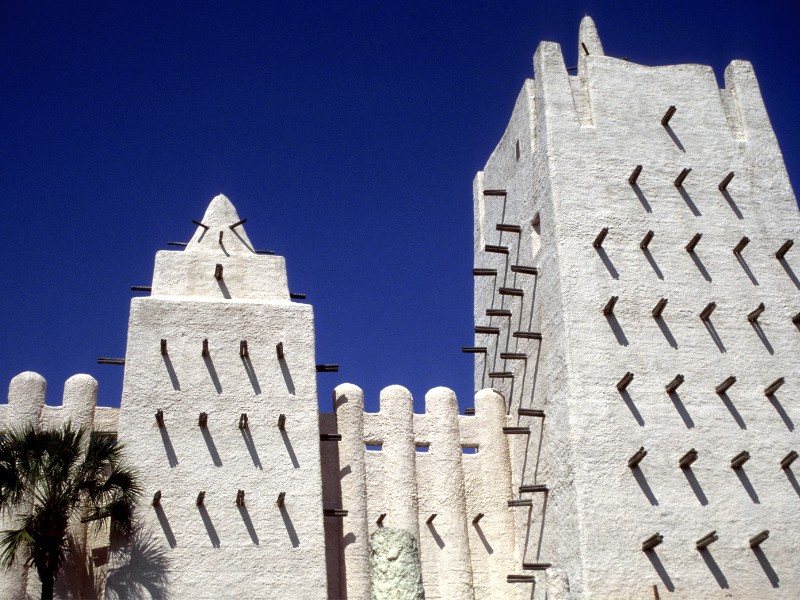
A Melting Pot of Markets and Melodies
The Grand Marché: A Bazaar of Dreams
The Grand Marché, Bamako’s bustling epicenter, is not just a market; it’s an adventure. Here, narrow aisles brim with vibrant textiles, aromatic spices, and intricate crafts, each stall narrating its own story of Malian heritage and craftsmanship. The air is thick with the languages of West Africa, a testament to Bamako’s role as a cultural crossroads.
Echoes of Mali’s Musical Soul
In Bamako, music is the lifeblood, a force that permeates the city’s veins. Jazz clubs, tucked away in lively streets, offer a fusion of African rhythms and Western melodies, while traditional griot performances connect the present with the echoes of the past. The city doesn’t just celebrate its musical heritage; it lives it, breathes it.
Journey Through Time and Art
The National Museum: A Gateway to the Past
Nestled in Bamako’s heart, the National Museum of Mali is a sanctuary of history and culture. Ancient artifacts stand alongside contemporary art, weaving a narrative of Mali’s rich past and vibrant present. The museum’s gardens are a serene escape, where sculptures merge with nature, inviting reflection.
Architectural Harmony
Bamako’s architecture is a visual symphony of styles, from the mud-brick grandeur of the Grande Mosquée to the colonial elegance of the Quartier du Fleuve. The cityscape is a canvas, reflecting Mali’s journey through epochs, each building and monument a note in its harmonious melody.
Culinary Crossroads
The streets of Bamako are a culinary mosaic, where the aromas of street food stalls mingle with the scents of open-air markets. From the hearty flavors of tigadegena (peanut sauce) to the freshness of mafe (meat stew), Bamako’s cuisine invites exploration. It’s a place where food tells the story of a people, rich in diversity and bound by tradition.
Embracing the Niger River
The Niger River, a lifeline, winds through Bamako, shaping its landscape and rhythms. Cruises at dusk offer views of fishermen silhouetted against the setting sun, a timeless scene. The riverbanks come alive with the chatter of markets and the laughter of children playing, a testament to the enduring spirit of the city and its people.
Bamako, with its relentless energy, cultural richness, and historical depth, offers a journey that challenges perceptions and enchants the soul. It’s a city where every corner tells a story, waiting to be discovered, lived, and remembered.

Bamako City Guide: A Brief History Of Bamako, Mali
Nestled along the banks of the Niger River, Bamako, Mali’s bustling capital, tells a story that spans centuries. From its humble beginnings as a seasonal settlement to its rise as a thriving metropolis, Bamako’s history is a fascinating tale of resilience, culture, and transformation. Let’s take a closer look at the layers of history that have shaped this vibrant city.
The Early Days
A Seasonal Haven
Originally, Bamako served as a safe haven for traders and travelers. Its strategic location by the Niger River made it a perfect stopover. Markets sprang up. Bamako became a melting pot of cultures and goods.
Village to City
What started as a small village grew exponentially. By the late 19th century, French colonial influence began to shape its destiny. Bamako was on the brink of transformation.
Colonial Crossroads
The French Footprint
In 1883, Bamako came under French control. It quickly evolved into a significant administrative center, railways were constructed, and infrastructures improved. The city’s fabric began to change.
Toward Independence
Despite colonial rule, the spirit of Bamako’s people remained unbroken. The city became a hotspot for anti-colonial movements. By 1960, Mali gained independence, and Bamako was at its heart. The city breathed freedom.
Post-Independence Boom
Capital of a New Nation
With independence came the title of capital for Bamako. It symbolized a new beginning. Development surged. Populations grew. Bamako was shaping into the metropolis we know today.
Cultural Renaissance
Post-independence Bamako experienced a cultural renaissance. Music, art, and literature flourished. The city became known for its vibrant arts scene, echoing Mali’s rich heritage.
Bamako Today
A Modern Metropolis
Today, Bamako is a city of contrasts. Skyscrapers tower over traditional mud-brick homes. Bustling markets coexist with modern shopping centers. It’s a place where history and modernity intertwine.
Heart of Mali
Despite its rapid growth, Bamako retains its soul. The Niger River, lifeblood of the city, continues to nurture its lands and people. Festivals, music, and dance remain integral to its identity.
Bamako’s story is one of resilience and growth, a testament to the strength and spirit of its people. From its days as a trading post to its status as a capital city, Bamako has retained its warmth and welcoming nature.

Bamako Top Attractions and Best Places to Visit in Mali
Bamako has had a history of human habitation that stretches well back into pre-historic times. However, colonial times elevated this humble settlement’s importance considerably, as the French made Bamako the capital of French Sudan in the 19th century.
Independence has led to slow and halting progress in Mali since its inception in the mid-20th century, as authoritarian rule, corruption, and terrorism have all done their part to keep the country poor.
However, Bamako contains most of the conveniences which make it a good base, so plan to spend a couple days here on either side of your trip.
Soon after your arrival, check out the Musee National de Bamako. Containing archaeological and anthropological artifacts that tell the story of this nation, this institution is a must for those looking to gain an initial understanding of what Mali is all about.
More Attractions
Throughout its hallways, you’ll find examples of traditional dress, ritualistic items, musical instruments, and other pieces that people have used to live life through previous generations.
Outside, there are scale models of some of this country’s most famous mosques, such as the Grand Mosque of Djenné and the Djingareiber Mosque in Timbuktu, so if you are unable to travel to these parts of Mali, you’ll get an idea of their brilliance by checking out these sculptures.
Mali is a country that is 98% Muslim, but in Bamako, you’ll find the Sacred Heart Cathedral, the most significant Christian structure in this country. While it is a modest church compared to other Christian buildings found elsewhere in the world, the experience of attending mass here is well worth your time, as it is conducted with a rich African flavour.
As mentioned previously, Mali is a majority Muslim country. Within the capital, the Grand Mosque of Bamako is the finest example of an Islamic house of worship. Unlike the mud brick mosques found elsewhere, which follow a Sahelian style of architecture, this mosque was funded and built by the Saudi Arabian government in the 1970s.
As such, it compares more favourably to buildings found in the Middle East versus those seen throughout Bamako and Mali.
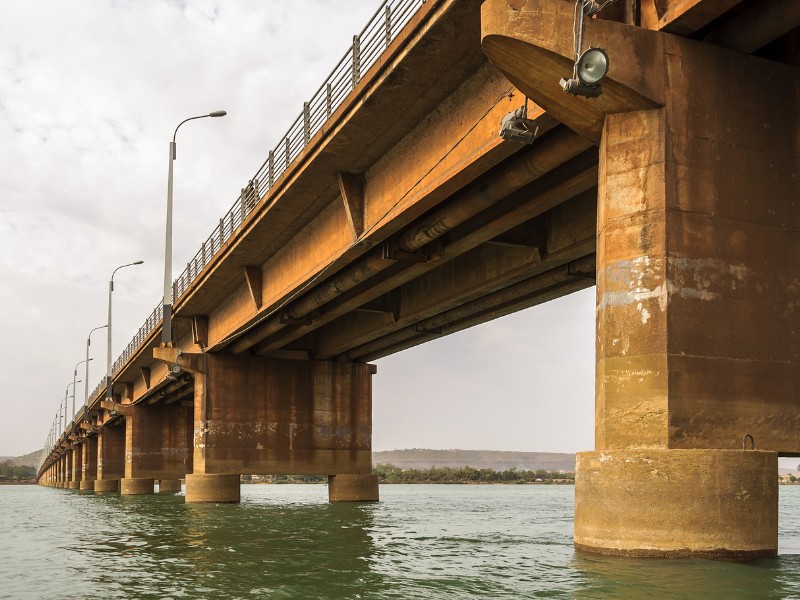
Other Cultural Attractions: Trip to Bamako, Mali
Like many other cities in West Africa, Bamako is long on urban chaos and light on green space. The construction of the Parc National du Mali was done to help change this trend, as its completion in 2010 gave residents a place with grass and trees to compliment the concrete plazas, sprawling buildings and clogged streets that did nothing to induce relaxation.
Occupying 17 hectares of land in the middle of Bamako opposite the National Museum, it is home to an arboretum, gardens, public exercise equipment, playgrounds, and trails which do their best to help you forget that you are in the midst of a busy West African city.
Other Attractions
Those wanting to get a look at everyday life in Mali’s capital will want to make a trip out to Bamako Market. Busy from sunrise to sunset with activity ranging from food to hardware shopping, there is also the opportunity for visitors to pick up handicrafts during their time here. While there are many things to choose from here, be aware that vendors will try to quote an outrageous price at first, so keep this in mind when haggling.
Further, keep your wits about you while moving through the market, as there are skilled pickpockets that work the crowds on a regular basis – they know a mark when they see one, so stay alert and you’ll be fine.
Before leaving Bamako for the Malian hinterland, head up Point G Hill to get a great view of the city and the surrounding area. You’ll be privy to a view that will reveal a surprisingly green dot of urbanity amid an arid landscape that defines much of Mali. If you are an avid photographer, you cannot afford to miss this vantage point while you are in Bamako.
source: Eboh Media on YouTube
Top 20 Things To Do in Bamako, Mali For Visitors
Here are the top 20 things to do in Bamako, Mali:
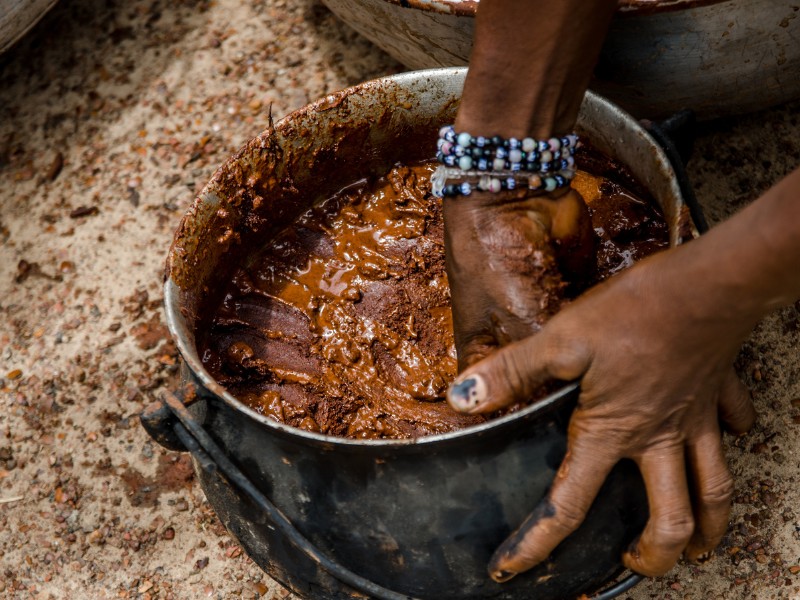
1. Visit the National Museum of Mali
The National Museum of Mali is a cultural treasure trove that showcases the country’s rich archaeological and ethnographic heritage. The museum features exhibits on Mali’s ancient civilizations, including the famous Timbuktu manuscripts, traditional textiles, and artifacts from the Mali Empire. The museum’s beautiful gardens offer a peaceful retreat from the city’s hustle and bustle. It’s a must-visit for anyone interested in understanding Mali’s diverse cultures and history.
- Best for: History and art lovers.
- Tip: Don’t miss the outdoor sculpture garden for a relaxing break.
- Highlight: The priceless collection of the ancient Timbuktu manuscripts.
2. Explore the Bamako Grand Mosque
The Bamako Grand Mosque is a significant religious and architectural landmark in the city. Built in the 1970s, it features a blend of traditional Sudano-Sahelian and modern architectural styles. The mosque is especially lively during prayer times and Islamic festivals. While non-Muslim visitors may not enter the prayer hall, the exterior and the surrounding area are worth exploring for their vibrant atmosphere.
- Best for: Architecture enthusiasts and cultural explorers.
- Tip: Visit during prayer time to experience the lively atmosphere.
- Highlight: The unique mix of Sudano-Sahelian and modern architectural design.
3. Stroll Through Bamako Botanical Gardens
The Bamako Botanical Gardens offer a tranquil escape with their lush landscapes and diverse plant species. These gardens are not only a place for relaxation but also serve as an educational resource on local flora. The gardens host cultural events and exhibitions, making it a lively spot for locals and tourists. It’s a perfect place for a leisurely walk, picnic, or simply to enjoy a moment of peace amidst nature.
- Best for: Nature lovers and families.
- Tip: Bring a picnic and enjoy a peaceful afternoon.
- Highlight: The lush, serene atmosphere of native Malian flora.
4. Shop at the Marché de Medina
The Marché de Medina is Bamako’s bustling market where you can find everything from fresh produce to traditional Malian textiles and handicrafts. It’s a vibrant hub of activity where bargaining is part of the experience. The market offers an authentic glimpse into daily life in Bamako and is an excellent place to shop for souvenirs. Exploring the market is an adventure in itself, offering sensory overload with its colors, sounds, and smells.
- Best for: Souvenir shopping and local immersion.
- Tip: Bargain for better prices—it’s expected!
- Highlight: A wide variety of handcrafted Malian goods.
5. Enjoy the Views from Point G Hill
Point G Hill provides panoramic views of Bamako and the Niger River. The hill is also home to ancient rock paintings and a hospital built by the French colonial administration. It’s a popular spot for both locals and tourists, especially at sunset when the city lights begin to sparkle. The climb up is relatively easy and rewards visitors with breathtaking vistas.
- Best for: Sunset lovers and photographers.
- Tip: Visit in the late afternoon for the best light.
- Highlight: The breathtaking views of Bamako and the Niger River.
6. Experience the Bamako Artisan Market
The Bamako Artisan Market is a haven for art lovers and collectors, offering a wide range of Malian crafts, including jewelry, leather goods, and sculptures. The market is a great place to meet local artists and craftsmen and learn about the techniques and materials used in their work. Haggling over prices is expected and part of the fun. Visitors can find unique pieces that reflect Mali’s rich artistic traditions.
- Best for: Art lovers and collectors.
- Tip: Be ready to haggle for the best deals.
- Highlight: Meeting local artisans and seeing their creations firsthand.
7. Take a Boat Trip on the Niger River
A boat trip on the Niger River is a peaceful way to see Bamako from a different perspective. Various operators offer cruises, from simple pirogues to more elaborate tour boats. Along the way, you’ll see fishermen at work, children playing by the riverbanks, and the lush greenery that lines the river. Sunset cruises are particularly magical, offering stunning views of the sky changing colors over the water.
- Best for: Relaxation and scenic views.
- Tip: Book a sunset cruise for the most picturesque experience.
- Highlight: Stunning sunset views of Bamako from the water.
8. Visit the Bamako Cathedral
Bamako Cathedral is a striking landmark with its bright yellow façade and impressive architecture. The cathedral stands as a symbol of the city’s religious diversity and tolerance. Inside, the peaceful ambiance provides a stark contrast to the busy streets outside. The cathedral hosts regular services and is open to visitors who wish to explore its interior and learn about its history.
- Best for: Architecture lovers and those seeking peace.
- Tip: Visit early to avoid the crowds and enjoy the peaceful ambiance.
- Highlight: The cathedral’s beautiful, bright façade and tranquil interior.
9. Attend the Festival Acoustik Bamako
The Festival Acoustik Bamako is an annual music event that showcases a mix of traditional Malian music and international genres. It’s a fantastic opportunity to experience the vibrant music scene of Mali, known as the birthplace of the blues. The festival attracts renowned musicians from around the world and fosters cultural exchange. Attendees can enjoy live performances in various venues across the city.
- Best for: Music lovers and festival-goers.
- Tip: Book tickets early to secure spots for the top performances.
- Highlight: The blend of traditional Malian music with global influences.
10. Explore the Bamako Zoo
The Bamako Zoo is home to a variety of animal species, many of which are native to Africa. The zoo is committed to conservation and education, making it a great place for families to learn about wildlife. The enclosures are designed to mimic the animals’ natural habitats as closely as possible. The zoo also features a small botanical garden, adding to its appeal.
- Best for: Families and animal lovers.
- Tip: Visit early to avoid the midday heat.
- Highlight: Native African species in naturalistic habitats.
11. Dine at a Riverside Restaurant
Bamako’s location along the Niger River means there are several riverside restaurants offering delicious local and international cuisine with scenic views. Dining by the river, especially in the evening, provides a memorable experience with the city lights reflecting on the water. It’s the perfect setting for a romantic dinner or a relaxed meal with friends. The fresh fish dishes are a must-try.
- Best for: Romantic dinners and scenic meals.
- Tip: Reserve a table with a river view for the best experience.
- Highlight: Delicious cuisine paired with panoramic river views.
12. Discover the Martyrs’ Monument
The Martyrs’ Monument is a significant historical site dedicated to the Malians who lost their lives in the struggle against dictatorship. The monument is an impressive architectural structure, symbolizing Mali’s journey towards democracy and freedom. Visitors can learn about the country’s recent history and the importance of democracy. The site offers panoramic views of the city, making it a popular spot for photography.
- Best for: History buffs and photographers.
- Tip: Visit at sunrise or sunset for the best lighting.
- Highlight: A powerful symbol of Mali’s journey towards democracy.
13. Relax at Parc National du Mali
The Parc National du Mali, a large urban park, offers a blend of natural landscapes and modern recreational facilities. The park features walking trails, playgrounds, a sports complex, and beautifully landscaped gardens. It’s an oasis of greenery where visitors can escape the city’s heat and noise. The park frequently hosts cultural events and concerts, adding to its vibrant atmosphere.
- Best for: Nature lovers and families.
- Tip: Pack a picnic and spend the day exploring.
- Highlight: Beautiful, landscaped gardens and open green spaces.
14. Admire Contemporary Art at the Muso Kunda Museum
The Muso Kunda Museum is dedicated to women’s art and cultural contributions in Mali. It features contemporary art exhibitions, traditional crafts, and historical displays that highlight the role of women in Malian society. The museum also serves as a cultural center, offering workshops and events. It’s a unique institution that provides insight into the challenges and achievements of Malian women.
- Best for: Art lovers and those interested in women’s history.
- Tip: Check the event schedule for workshops and talks.
- Highlight: Contemporary art created by and about Malian women.
15. Learn at the Mali Digital Innovation Center
The Mali Digital Innovation Center is at the forefront of technology and innovation in the country. Visitors can learn about the latest technological advancements in Africa and how they are being applied to solve local issues. The center hosts exhibitions, workshops, and talks on various topics related to digital technology. It’s an inspiring place for anyone interested in the future of technology in Africa.
- Best for: Tech enthusiasts and innovators.
- Tip: Participate in workshops to learn about new technologies firsthand.
- Highlight: Innovative solutions addressing real-world challenges.
16. Participate in a Cooking Class
Joining a local cooking class is an excellent way to dive into Malian cuisine and culture. Participants can learn how to prepare traditional dishes such as jollof rice, tiga diga na, and Mali’s famous peanut sauce. Cooking classes often include a market tour to select fresh ingredients. It’s a hands-on experience that ends with enjoying the delicious meals you’ve helped prepare.
- Best for: Foodies and cultural explorers.
- Tip: Visit a local market with the chef to choose fresh ingredients.
- Highlight: Cooking and enjoying your own traditional Malian meal.
17. Enjoy Live Music at a Local Club
Bamako is known for its lively music scene, with numerous clubs and bars offering live performances. From traditional Malian music to modern Afrobeat and jazz, there’s something for every music lover. It’s an opportunity to experience the city’s vibrant nightlife and possibly discover new favorite artists. The warmth and energy of Bamako’s music venues make for an unforgettable night out.
- Best for: Music and nightlife enthusiasts.
- Tip: Arrive early for the best seats near the stage.
- Highlight: Energetic performances from local musicians.
18. Visit the Somono Fishermen’s Village
The Somono Fishermen’s Village on the banks of the Niger River offers a glimpse into the traditional lifestyle of Mali’s fishing communities. Visitors can observe the fishermen’s daily activities, learn about their traditional fishing techniques, and even take a pirogue (small boat) tour. The village is a living museum of Malian culture and provides a unique perspective on the importance of the river to local livelihoods.
- Best for: Cultural explorers and those seeking authentic experiences.
- Tip: Take a guided tour to learn about local fishing practices.
- Highlight: Witnessing the daily life of Mali’s river communities.
19. Explore the Bamako Crafts Market
The Bamako Crafts Market is a bustling marketplace where artisans sell handmade goods, including textiles, jewelry, pottery, and woodcarvings. It’s an excellent place to find unique souvenirs and support local craftsmanship. The market also offers a chance to interact with the artisans and learn about their craft. Each purchase helps sustain traditional arts and provides a meaningful connection to Malian culture.
- Best for: Shoppers and lovers of handmade crafts.
- Tip: Take your time to browse and haggle for the best deals.
- Highlight: Unique handmade crafts reflecting Mali’s rich artistic culture.
20. Participate in the Bamako International Marathon
The Bamako International Marathon is an annual event that attracts runners from all over the world. Participants can choose between various distances, making it accessible to runners of all levels. The marathon route offers scenic views of the city and its landmarks, creating a memorable experience. It’s a great way to challenge yourself while experiencing the camaraderie and spirit of the local and international running community.
- Best for: Runners and fitness enthusiasts.
- Tip: Register early to secure your spot in the race.
- Highlight: Running through Bamako’s historic streets alongside local and international participants.

What To Eat and Drink in Bamako, Mali
From hearty stews to refreshing beverages, Bamako’s food scene is a delightful exploration of flavors, spices, and traditions. Here’s your guide to the must-try dishes and drinks in this bustling city.
Must-Try Dishes
1. Tigadegena (Peanut Sauce)
Often referred to as Mali’s national dish, Tigadegena is a rich, flavorful peanut sauce made with ground peanuts, tomatoes, and spices, usually served with rice and meat or vegetables. It’s a comforting dish that perfectly encapsulates the hearty essence of Malian cuisine.
2. Tô
A staple in Malian households, Tô is a thick porridge made from millet or sorghum flour. It’s traditionally served with sauces or stews, offering a subtle taste that beautifully complements the robust flavors of its accompaniments.
3. Fonio
Fonio is a type of millet with a nutty flavor and is considered one of the oldest cereals in West Africa. In Bamako, it’s often cooked like rice or couscous and can be found accompanying various dishes, celebrated for its health benefits and delicious taste.
4. Maafe
This hearty stew is made with meat (commonly chicken or beef), vegetables, and a base of tomato and peanut butter, creating a rich and comforting dish. Maafe is a testament to the depth of flavor that characterizes West African cuisine and is a must-try for any visitor.
5. Fried Plantains
A popular snack or side dish, fried plantains are sweet, savory, and utterly addictive. They’re often enjoyed alongside main meals or as a street food delicacy, showcasing the simplicity and deliciousness of Malian cooking.
Refreshing Drinks
6. Dabileni
Dabileni, or hibiscus tea, is a refreshing, slightly tart beverage made from hibiscus flowers. Served cold with sugar, it’s not only delicious but also provides relief from Bamako’s heat.
7. Zoomkoom
This traditional beverage is made from millet flour, ginger, lemon, and sugar, offering a sweet and spicy taste that’s both energizing and refreshing. Zoomkoom is often consumed during festivities and celebrations.
8. Green Tea with Mint
Green tea, especially when flavored with mint, is a popular drink in Bamako, reflecting the influence of North African tea culture. It’s usually prepared with a generous amount of sugar and served in small glasses, symbolizing hospitality and community.
9. Baobab Juice
Made from the fruit of the baobab tree, this juice is a treasure trove of vitamins and tastes uniquely tangy and sweet. It’s a common sight in local markets and a delicious way to stay hydrated.
10. Local Beers
For those looking to unwind, Bamako offers a range of local beers to sample. Brews like Castel and Flag are widely available and offer a taste of Mali’s brewing scene.

Top Restaurants In Bamako, Mali
Here’s a list of top restaurants in Bamako, Mali, where you can enjoy a memorable dining experience, from traditional Malian dishes to global gastronomic delights.
1. Restaurant Le Loft
Le Loft stands out for its fusion cuisine, blending French culinary techniques with local flavors. Situated in the Hippodrome area, this chic restaurant offers a modern dining experience with a menu that changes seasonally, ensuring fresh and innovative dishes. Its elegant atmosphere makes it perfect for a special night out.
2. San Toro
Specializing in authentic Malian cuisine, San Toro offers a warm and inviting atmosphere where guests can enjoy traditional dishes like tigadegena and maafe. The restaurant also features live music on certain nights, providing a lively dining experience that captures the spirit of Bamako.
3. Appaloosa Restaurant
Known for its diverse menu that caters to international tastes, Appaloosa is a favorite among expats and tourists. From juicy burgers to savory Mexican dishes, this restaurant ensures quality and flavor in every bite. Its central location and casual ambiance make it an ideal spot for a relaxed meal with friends or family.
4. La Terrasse
La Terrasse boasts a rooftop setting that offers stunning views of Bamako, making it a perfect choice for dining under the stars. The menu includes a mix of Mediterranean and West African dishes, prepared with fresh, local ingredients. It’s a great place to enjoy a sunset cocktail followed by a delicious dinner.
5. Soukhothai
Offering a taste of Thailand in the heart of Mali, Soukhothai is celebrated for its authentic Thai cuisine. The restaurant’s tranquil setting, complete with traditional Thai décor, complements the flavorful dishes crafted by its skilled chefs. It’s a culinary escape that’s both exotic and refreshing.
6. Zorba le Grec
For those craving Mediterranean flavors, Zorba le Grec serves up delicious Greek and Lebanese dishes. Its friendly atmosphere and hearty portions have made it a staple in Bamako’s dining scene. The restaurant also offers outdoor seating, ideal for enjoying a meal in the cooler evening air.
7. Le Bistrot
Le Bistrot is a French-style restaurant that offers a cozy dining experience with a menu featuring classic French dishes alongside Malian favorites. The intimate setting and attention to detail in every dish make it a popular choice for both lunch and dinner.
8. Bamako By Night
As the name suggests, Bamako By Night is a vibrant spot that comes alive in the evening. Serving a variety of international dishes, the restaurant is also known for its live music and entertainment, providing a full dining experience that goes beyond just food.
9. Blabla Bar & Restaurant
Blabla Bar & Restaurant is where local cuisine meets a relaxed, friendly atmosphere. With an emphasis on fresh, local produce, the menu offers a range of dishes that capture the essence of Malian cooking. The restaurant’s laid-back vibe makes it a great place to unwind after a day of exploring.
10. The Badalodge Restaurant
Located by the river, The Badalodge Restaurant offers a picturesque dining setting along with a menu that highlights the best of Malian and international cuisine. Diners can enjoy their meals in thatched-roof huts overlooking the water, making for a truly serene and memorable dining experience.
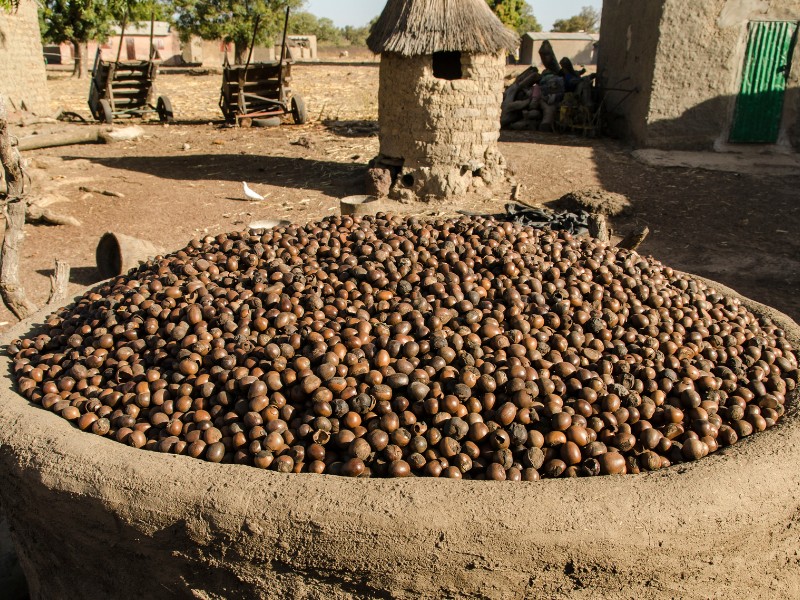
Tours For Visitors To Bamako, Mali
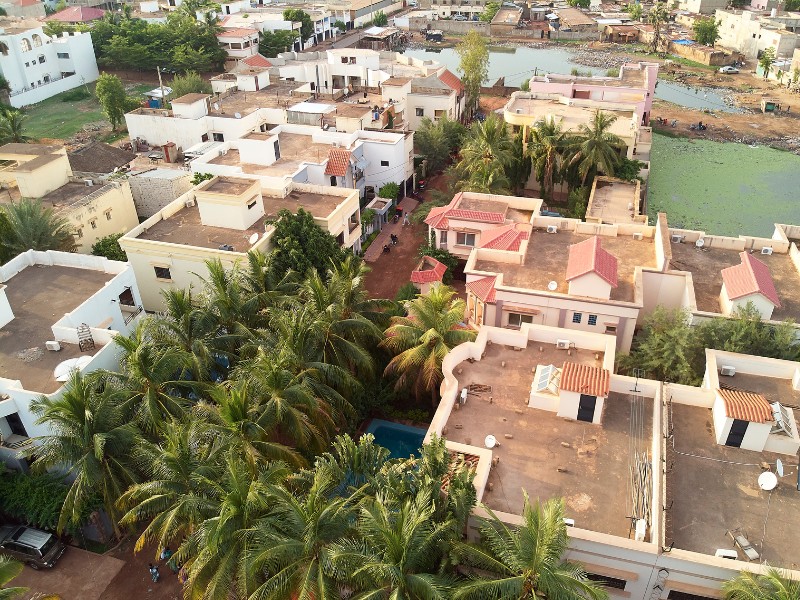
Bamako Accommodations Guide: Hotels, Guesthouses and Hostels
Here’s a comprehensive guide to where to stay in Bamako, ensuring you find the perfect base for exploring this vibrant city.
Luxury Hotels
1. Radisson Blu Hotel Bamako
Offering elegance and top-notch amenities, the Radisson Blu is known for its exceptional service, modern rooms, and tranquil pool area. It’s an oasis of comfort in the heart of Bamako, ideal for those seeking luxury and convenience.
2. Laico Hôtel El Farouk Bamako
Situated on the banks of the Niger River, Laico Hôtel El Farouk provides guests with stunning views, spacious accommodations, and a refreshing outdoor pool. The hotel’s restaurants serve a variety of international cuisine, catering to all tastes.
Mid-Range Hotels
3. Hotel Le Rabelais
Hotel Le Rabelais offers a cozy and welcoming atmosphere, with a beautiful garden setting and a pool. It’s renowned for its friendly staff, delicious breakfast, and comfortable rooms, making it a great value choice for travelers.
4. Azalai Hotel Salam
Located near the city center, Azalai Hotel Salam features comfortable accommodations, an outdoor swimming pool, and multiple dining options. It’s a preferred choice for business and leisure travelers alike, offering a blend of convenience and comfort.
Budget Accommodations
5. The Sleeping Camel
The Sleeping Camel is a favorite among backpackers and budget travelers, known for its laid-back atmosphere, helpful staff, and comfortable, affordable rooms. It also serves as a hub for travelers looking to exchange tips and stories.
6. Auberge Djamilla
A cozy guesthouse that feels more like staying with family, Auberge Djamilla offers simple, clean rooms at affordable prices. The guesthouse is praised for its warm hospitality and home-cooked meals, providing a genuine Malian experience.
Guesthouses and B&Bs
7. Badalodge Hotel & Restaurant
Nestled along the Niger River, Badalodge offers tranquil accommodations in a picturesque setting. Guests can enjoy traditional Malian architecture, an outdoor pool, and dining by the river, making it a peaceful retreat from the city’s hustle.
8. La Venise Malienne
This charming bed and breakfast provides a home away from home experience with its comfortable rooms, personalized service, and a quiet location. La Venise Malienne stands out for its beautiful garden and terrace where guests can relax.
Hostels
9. Hostel Teriya
Offering dormitory and private room options, Hostel Teriya caters to backpackers and travelers on a tight budget. It’s a great place to meet other travelers, with communal areas designed for socializing and sharing travel experiences.
10. Campement Kangaba
On the outskirts of Bamako, Campement Kangaba offers a unique accommodation experience in traditional Malian huts, providing a blend of culture, nature, and comfort. It’s an ideal choice for those looking to experience Mali’s natural beauty while staying within reach of the city.
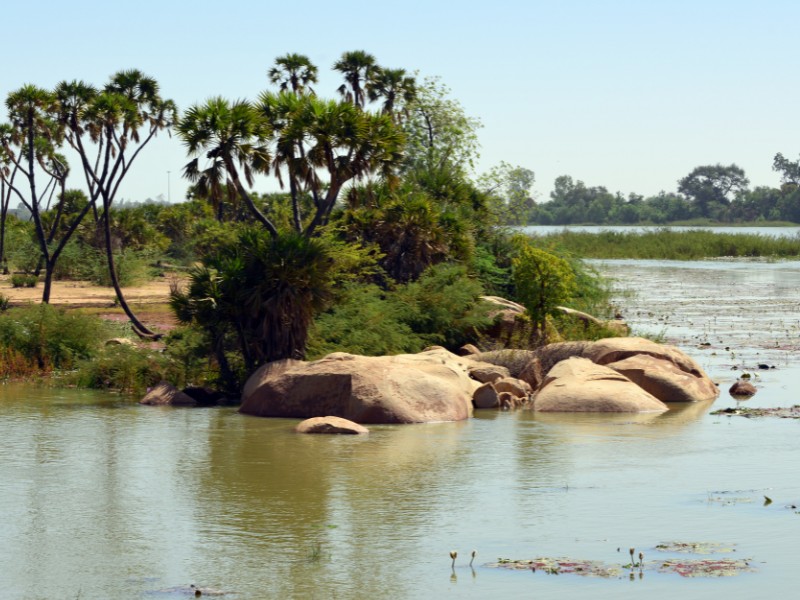
Day Trips From Bamako, Mali
The surrounding regions boast natural beauty, historical sites, and cultural richness waiting to be discovered. Here are ten day trips from Bamako that promise enriching experiences beyond the capital’s hustle.
1. Siby
Just an hour’s drive from Bamako, Siby offers a tranquil escape with its stunning landscapes, including the majestic Arch of Kamandjan. Hiking opportunities abound, leading to waterfalls and ancient rock paintings. The area is also known for its artisanal community, where visitors can purchase handmade souvenirs. Siby provides a perfect blend of natural beauty and cultural exploration.
2. Mande Mountains
The Mande Mountains, west of Bamako, are steeped in history and spiritual significance. They offer hiking trails that reveal traditional Dogon villages and sacred sites. The views from the mountains are breathtaking, overlooking the Niger River and lush valleys. A visit here offers insight into the traditional lifestyles and beliefs of the Malian people.
3. Kangaba
A trip to Kangaba immerses visitors in the heart of the Manding Empire’s history. The town is home to the Kamablon, a sacred hut where traditional ceremonies are still performed. Visitors can also explore the ruins of the ancient city of Kangaba, a UNESCO World Heritage site. The town is known for its craft market, showcasing traditional Malian textiles and pottery.
4. Ségou
Once the capital of the Bambara Empire, Ségou, situated along the Niger River, is known for its colonial architecture and vibrant pottery markets. A boat trip on the Niger offers a unique perspective of the city and visits to nearby fishing villages. The annual Festival sur le Niger here attracts musicians and artists from across West Africa. Ségou’s laid-back atmosphere provides a stark contrast to Bamako’s energy.
5. Djenné
Though more than a day’s journey from Bamako, Djenné is worth the effort for its iconic Great Mosque, the world’s largest mud-brick structure, and a UNESCO World Heritage site. The town’s ancient architecture and Monday market, one of the most vibrant in West Africa, offer a deep dive into Mali’s heritage. Guided tours can help unravel the rich history of Djenné, once a hub for traders and scholars. It’s a photographer’s dream, with its traditional buildings and bustling streets.
6. Bandiagara Escarpment
The Bandiagara Escarpment, home to the Dogon people, is another longer trip but offers an unparalleled cultural experience. Guided treks along the escarpment reveal ancient cliff dwellings, granaries, and sacred altars. The Dogon villages are known for their unique cultural practices, astronomy knowledge, and masked dances. Though more suited for an overnight trip, it’s an unforgettable experience that showcases Mali’s diversity.
7. Sikasso
Sikasso, Mali’s second-largest city, offers a look into the country’s colonial past and its struggle for independence. The Sikasso fortress, Tata, built to protect the city from invaders, and the Mamelon, the residence of the last king of Sikasso, are must-visit sites. The city is also surrounded by fertile lands, making it a center for agriculture. Markets here overflow with fresh produce, offering a taste of Mali’s bounty.
8. Bla
Halfway between Bamako and Ségou, Bla offers a peaceful stopover with its beautiful mosque and bustling market. The town is a great place to experience everyday life in Mali away from the tourist routes. It’s also known for its music festivals, which celebrate Mali’s rich musical traditions. Bla provides a glimpse into the heart of Mali, where traditions are kept alive by its people.
9. Niono
Niono is an agricultural hub known for its vast rice fields, part of the Office du Niger irrigation project. The area around Niono allows visitors to understand Mali’s agricultural practices and the challenges of desertification. Birdwatchers will enjoy the Inner Niger Delta, where many species can be observed. It’s a testament to Mali’s efforts to harness and respect its natural resources.
10. Parc National du Mali, Bamako
For those preferring not to venture far from the capital, the Parc National du Mali in Bamako offers a lush oasis. This well-maintained park features walking trails, a botanical garden, and a zoo. It’s a perfect spot for families, offering a peaceful retreat within the city. The park also hosts concerts and cultural events, adding to Bamako’s vibrant social scene.

Bamako Transportation Guide
Here’s a detailed travel guide to getting around in Bamako.
1. Taxis
Yellow taxis are a ubiquitous sight in Bamako and one of the most convenient ways to get around the city. They can be hailed on the street or ordered through your hotel. Negotiating the fare in advance is standard practice, as meters are rarely used. Taxis offer a direct, albeit sometimes pricier, mode of transportation to your destination.
2. Sotramas
Sotramas are brightly painted minibuses that serve as Bamako’s primary public transport. They follow specific routes but don’t have fixed stops, so passengers can hop on and off anywhere along the route. Riding a Sotrama is an affordable way to travel, though it can be crowded and confusing for first-time visitors. Locals are usually helpful in guiding tourists to the right Sotrama.
3. Motorcycle Taxis
For quicker trips around Bamako, motorcycle taxis offer an agile alternative to navigate through traffic. They’re ideal for solo travelers and provide a more exhilarating way to see the city. As with car taxis, agree on the fare before starting your journey. Helmets may not always be provided, so exercise caution.
4. Rental Cars
Renting a car, with or without a driver, gives visitors the freedom to explore Bamako and its surroundings at their own pace. Several rental agencies operate in the city, offering a range of vehicles. Opting for a rental with a driver can be particularly beneficial, as local drivers are familiar with the traffic patterns and routes.
5. Bicycles
Biking is an eco-friendly way to explore Bamako, especially in less congested areas and for short distances. Some hotels and hostels offer bike rentals to their guests. It’s a great way to experience the city from a different perspective, though the bustling traffic and hot climate can be challenging.
6. Walking
Walking is a viable option in Bamako’s more central areas, where many attractions, markets, and restaurants are within reasonable distances from each other. It allows for a leisurely exploration of the city’s vibrant streets and markets. Always be mindful of traffic and pedestrian safety, as sidewalks can be inconsistent.
7. Boats
For a scenic route, consider taking a boat trip on the Niger River. While not a common mode of daily transport, boats offer leisurely tours and a unique perspective of Bamako from the water. It’s a tranquil way to escape the city’s hustle and immerse yourself in the natural beauty of the Niger River.
8. Private Hire
Hiring a private vehicle with a driver for the day is a stress-free way to navigate Bamako, especially for visitors unfamiliar with the city or those wanting to visit multiple sites in one day. While more expensive, it offers comfort, security, and the flexibility to customize your itinerary.
9. App-Based Ride Services
Though not as prevalent as in some other global cities, app-based ride services are slowly making their way into Bamako. They offer an alternative to traditional taxis with the convenience of booking rides through your smartphone. Availability and options may vary, so it’s worth checking the latest information during your stay.
10. Inter-city Buses
For day trips or travel to other parts of Mali, inter-city buses provide connections between Bamako and major cities. These buses range from basic to more comfortable coaches, catering to different budgets and preferences. It’s an affordable way to explore beyond the capital.

Where To Visit After Your Trip To Bamako?
After soaking in the vibrant life of Bamako, Mali’s capital, the country unfurls a myriad of destinations that promise even deeper explorations into its rich tapestry of cultures, landscapes, and history. Here’s where your adventure can lead you next:
1. Djenné
Home to the iconic Great Mosque, made entirely of mud-brick and considered the largest of its kind in the world, Djenné is a UNESCO World Heritage site. The city’s ancient architecture and Monday market, bustling with traders and artisans, offer a vivid glimpse into Mali’s past and present. Djenné’s archaeological sites reveal the history of a once-thriving trade center. It’s a photographer’s paradise, especially during the mosque’s annual replastering festival.
2. Mopti
Dubbed the “Venice of Mali” for its location at the confluence of the Niger and Bani rivers, Mopti is a bustling port and a gateway to the Dogon Country. Its lively fishing port, vibrant markets, and the beautiful Great Mosque of Mopti are must-visits. Boat trips from Mopti offer a unique perspective on life along Mali’s waterways. The city serves as an excellent base for excursions into the Dogon Country and the Bandiagara Escarpment.
3. Dogon Country
The Dogon Country, with its dramatic cliffside villages and unique cultural traditions, offers an unparalleled cultural and hiking experience. The region’s indigenous Dogon people are known for their elaborate masks, wooden sculptures, and astronomical knowledge. Trekking through the Bandiagara Escarpment reveals ancient dwellings, granaries, and sacred sites. It’s an immersive journey into a way of life that has maintained its traditions for centuries.
4. Timbuktu
Once considered the most remote place on earth, Timbuktu is legendary for its historic libraries and mosques, remnants of its golden age as a center of Islamic learning and trade. The city’s three great mosques, Djingareyber, Sankore, and Sidi Yahia, testify to its storied past. Though travel to Timbuktu is challenging, it remains a symbol of adventure and exploration. Visitors are advised to check travel advisories due to regional security concerns.
5. Ségou
This historic city on the Niger River boasts colonial architecture, ancient mud-brick buildings, and the famous Bobo mask dances. Ségou’s relaxed atmosphere is perfect for exploring its art and pottery centers, where traditional techniques are still in use. The annual Festival sur le Niger here showcases Mali’s rich musical heritage. A visit to Ségoukoro, the old capital, offers insights into the Bambara kingdom’s history.
6. Sikasso
Sikasso, surrounded by fertile lands, is known for its resistance against colonial forces under the leadership of King Tieba Traore. The Tata of Sikasso, a large fortress wall, and the Mamelon, the king’s palace, are significant historical sites. The city’s market is one of the largest in Mali, offering a variety of local produce and crafts. Sikasso’s pleasant climate and waterfalls in the surrounding areas also make it a refreshing stop.
7. Gao
On the eastern edge of Mali, Gao stands on the Niger River, with the Tomb of Askia, a UNESCO World Heritage site, as its crown jewel. The city’s history as a prosperous trading center is visible in its architecture and museum. Gao serves as a base for exploring the vastness of the Sahara and the unique culture of the Songhai people. The nearby dunes of Koïma offer breathtaking sunset views.
8. Bandiagara
Bandiagara is the gateway to the Dogon Country, offering a blend of breathtaking landscapes and deep cultural immersion. The town itself provides basic amenities and acts as a starting point for treks into the Dogon villages. Local guides are available to lead visitors on multi-day treks along the escarpment, providing valuable cultural insights. The area’s biodiversity is as impressive as its cultural heritage.
9. Kayes
Known as the “pressure cooker of Africa” for its intense heat, Kayes is intriguing for its colonial history and natural attractions, including the spectacular Gouina Falls and the Selingue Dam. The city’s architecture reflects its colonial past, while the surrounding areas offer opportunities for hiking and bird watching. Kayes is also the starting point for journeys into the Senegal River’s rich ecosystems. The region’s geological formations, like the Fort de Médine, add to its allure.
10. Manantali
Manantali is famed for its dam and lake, which have created a large reservoir offering water sports and fishing. The area is also a haven for bird watchers, with numerous species congregating around the water. Excursions on the lake provide a peaceful retreat from the desert’s harshness. The Manantali Dam is an engineering marvel, crucial for the region’s electricity and agriculture.
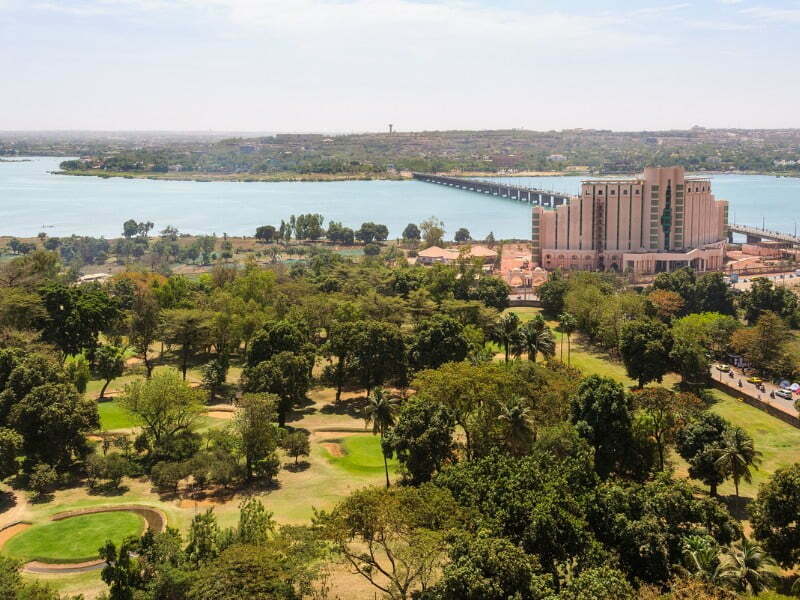
Bamako Travel Guide: Final Thoughts
Bamako is a city that truly encapsulates the essence of West Africa. With its bustling streets, vibrant markets, rich cultural heritage, and stunning natural beauty, it offers visitors a truly unforgettable travel experience.
From exploring the city’s museums and historic landmarks, to taking a boat tour of the Niger River, to venturing out to explore the surrounding countryside, Bamako has something for everyone. The city’s diverse range of accommodations, dining options, and transportation choices make it a convenient and comfortable destination for travelers of all budgets and preferences.
Whether you’re interested in immersing yourself in the local culture, trying new foods, or simply enjoying the warm and welcoming atmosphere of the city, Bamako is a destination that is sure to leave a lasting impression. It is a city that is bursting with life, energy, and excitement, and one that is truly worth exploring.
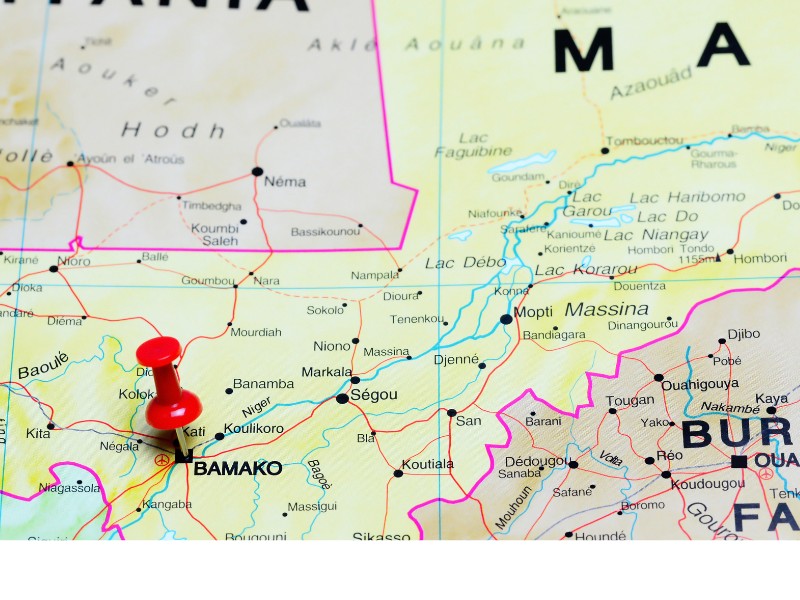
Ode To Bamako
In Bamako’s streets so full of life, A city full of sounds and sights, The markets bustle with energy, And colors fill the air so brightly.
From the Grand Mosque to the Museum’s halls, The city’s past and present enthralls, With music, art, and history, A culture rich and deep in mystery.
Take a boat down the Niger’s flow, And see the city’s beauty glow, Or venture out to the countryside, And see Mali’s natural pride.
Enjoy the taste of local fare, And savor spices in the air, With warmth and welcome all around, In Bamako’s heart, true joy is found.
So come and see this city’s soul, Let Bamako’s spirit make you whole, For in this land of vibrant hues, Travelers find new ways to view.
